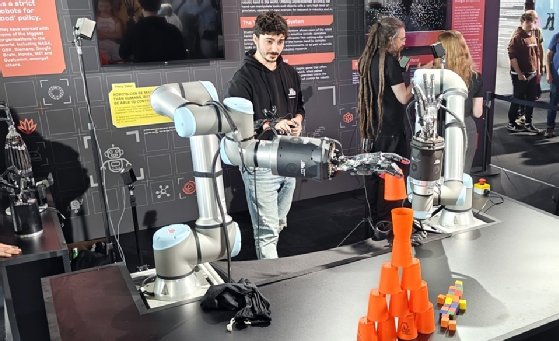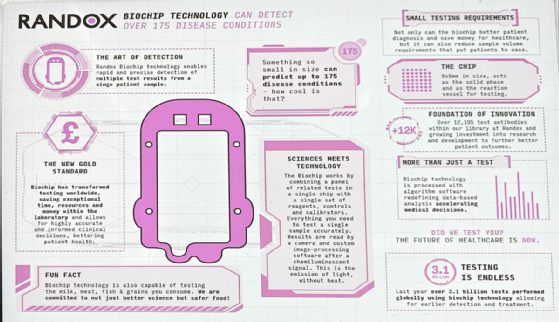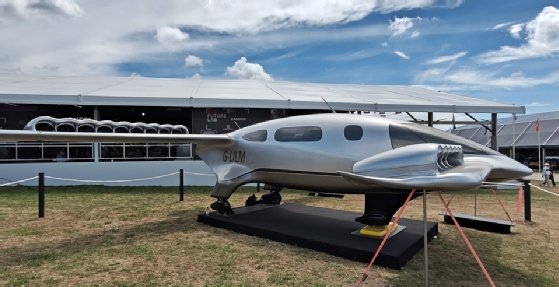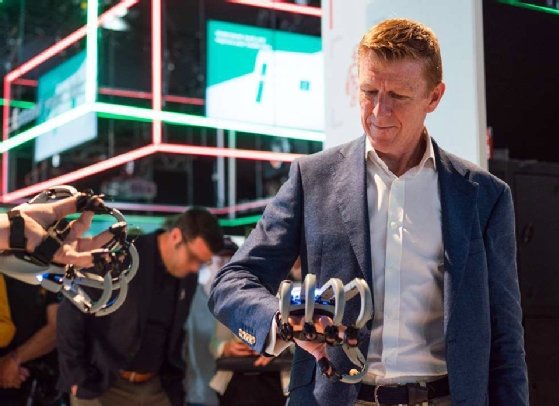
Toby Adamson
Engaging young people with careers in STEM at the Goodwood Festival of Speed
Backed by astronaut Tim Peake, the Future Lab exhibition at Goodwood’s annual celebration of motoring aimed to engage children with the excitement of technology innovation. Computer Weekly went to take a look
The UK tech sector continues to struggle with skills shortages, especially in emerging and high-priority areas such as cyber security and artificial intelligence (AI).
One of the contributory factors is a lack of interest in computer science education in schools. Computer Weekly recently reported that low uptake of computing-related subjects at GCSE level is threatening government plans to make the UK a “science and technology superpower”.
The tech industry needs to find better ways to engage students with the digital education that’s so vital to the future of the sector. It’s a problem recognised by British astronaut Tim Peake, the UK’s first honorary science, technology, engineering and maths (STEM) ambassador, a role that involves helping to support 35,000 volunteers who encourage young people’s interest in STEM careers.
One of the ways Peake gets personally involved is his support of Future Lab, an exhibition staged at the Goodwood Festival of Speed, where tech startups and established innovators demonstrate new products, with a particular focus on engaging 11 to 16 year olds.
“It is a brilliant environment where kids can go and get inspired – you see their eyes light up,” says Peake.
Computer Weekly went along to this year’s Goodwood festival to take a look at the best innovations that Future Lab had to offer – and it was evident how keen the children visiting the exhibition were to learn more.
Shadow Robot
The team at Shadow Robot has been working on improving the dexterity of robots for 20 years. The company is perhaps best known for its 2019 project working with OpenAI – the creators of ChatGPT – to train its robot hand to solve a Rubik’s Cube using neural networks.
At Future Lab, a live demonstration of the robot hand stacking cups proved popular with children at the show, but as Shadow Robot director Rich Walker explained to Computer Weekly, that five-fingered hand presents its own set of challenges.
While the hand can conduct fairly complex dexterity tasks, making it as human-like as possible shows the limits in material engineering, and highlights just how remarkable a human hand is.
When tested in more complex industrial applications, the robot hand can break down and often requires frequent maintenance. Walker says that every attempt to improve reliability is a compromise – to make fingers or joints stronger requires thicker or heavier materials that would distort the design away from its resemblance to a human hand.

To tackle these problems, Shadow Robot recently completed a four-year project with Google DeepMind to work out how to develop a robot hand that has the dexterity and sensitivity of a human hand, but also the robustness to work in real-world industrial environments.
Walker says that for DeepMind, the partnership was a research and development project to learn how to create AI and machine learning software that works with sensitive robotics.
The resulting product is a three-fingered hand, packed with what Walker describes as “sh*t loads of sensors”. A demonstration at Future Lab showed the robot hand gently manipulating an inflated balloon. More importantly perhaps, it also passed the ultimate durability test – having its fingers and mechanism prodded and pulled by fascinated young children.
Randox
Anyone who follows business news – or has watched the TV series The Dropout – will be familiar with the story of Elizabeth Holmes and her company, Theranos. Holmes raised more than $700m in investment and, at one point, Theranos was valued at over $9bn, having claimed to produce a machine that could perform more than 200 diagnostic tests from a single pinprick of blood.
The technology didn’t exist and never worked, and after Theranos crashed, Holmes was found guilty of fraud and sentenced to 11 years in prison.

What’s that got to do with Future Lab? Well, global healthcare tech company Randox has – sort of – succeeded where Theranos failed. The company’s Biochip technology claims to detect over 175 disease conditions from a single sample.
The 9mm2 chip combines a panel of related tests with a single set of reagants, controls and calibrators to test a single sample. Results are read by a camera and customised image-processing software from a chemi-luminescent signal, according to Randox’s exhibit.
Staff at Randox’s Future Lab demonstration were – understandably – reluctant to make Theranos comparisons themselves, but there are some parallels even if the technology is very different. The company already offers the rapid diagnostic technology as a service to its healthcare customers.
Privateer
Apple co-founder Steve Wozniak set up Privateer in 2021 to focus on the growing market for space data. In May this year, the company acquired mapping analytics firm Orbital Insight, and the combined offerings allow Privateer to uniquely offer data and analytics from both perspectives of data looking up at space and data from space looking down at Earth.
The firm’s Wayfinder software combines information from a variety of sources about objects in space, such as satellites and orbital debris. Currently, there are more than 27,000 human-made objects larger than a tennis ball orbiting the planet – and according to Nasa, also an estimated 100 million bits of debris larger than 1mm across. In the next 10 years, some 24,000 additional satellites are expected to be launched as space becomes increasingly commercialised.
The number of everyday services relying on satellites will increase as much, with industries such as communications, weather and climate, and financial services dependent on space technologies. Avoiding damage or catastrophe from collisions will be essential to satellite operators.
Privateer offers what could be described as the equivalent of a weather app for space objects – the ability to find out and predict how and where those orbiting objects will be, and the impact that could have. The company claims to be able to offer a forecast of where any object will be up to five days in advance.
Through the Orbital Insights acquisition, Privateer has added data services based on satellites looking down at Earth. Again, it combines data from a variety of sources and allows users to identify and track activity around the globe using AI modelling – data sources include things such as satellite photography or sensors such as maritime transponders and GPS trackers.
Chief technology officer Mike Moskwinski told Computer Weekly that commercial use cases could include supply chain management, climate monitoring, or tracking illegal ship movements.
Privateer’s offerings also have obvious uses in military and defence systems, but, unsurprisingly, that’s an area the company prefers not to discuss in public.
Atlantic Productions
Atlantic Productions is a documentary maker that has worked with Apple to develop 3D immersive videos designed for the Vision Pro virtual reality headset that launched in the UK this month (July 2024).
At Future Lab, the company demonstrated a simple spatial computing application that allows users to examine environmentally important areas of the Earth in 3D. Atlantic is also working with electric aircraft manufacturer Vertical Aerospace to create a model of its four-passenger vertical take-off and landing (VTOL) plane, which will be used for sales and marketing purposes to show prospective buyers around the craft through the capabilities of the Vision Pro headset.
The system is expected to make an appearance at the Farnborough Air Show, as an example of potential industrial and commercial uses from spatial computing and immersive film-making.
Lilium
A likely rival to Vertical Aerospace was also exhibiting at Future Lab – Lilium brought along its own electric VTOL jet, which is due to launch in 2026. The Lilium jet is designed for short-range regional air travel, with an initial range of 175km.

Lilium says the jet will target intercity services, to connect cities and communities in regions with the aim of helping to decarbonise short-haul air travel.
Sees.AI
Sees.AI has developed what it calls an “operating system for autonomous flight” to help support industrial uses of unmanned aerial vehicles (UAVs) – commonly known as drones. The company’s software and sensor unit can be attached to most models of drones, and allows operators to safely fly fleets of drones beyond line of sight.
At Future Lab, the company showcased a trial using its technology run by National Grid for inspecting electricity pylons. National Grid examines about 3,650 pylons every year to detect damage such as corrosion. Currently, that’s done by inspectors visiting each pylon and using a drone kept within line of sight to examine the steel structures.
The trial with Sees.AI’s technology will allow a fleet of drones to be managed remotely, capturing the inspections much more quickly and cost-effectively.
The product uses AI modelling, capturing video and sensor data, along with Lidar scanning, to identify the parts of a pylon needing inspection and to accurately capture the data needed to check the structure and components, with multiple drones being managed by a single operator.
The Civil Aviation Authority, which regulates UK airspace, is also involved as it too learns about UAV capabilities as it tries to regulate their use. Sees.AI hopes that the trial will demonstrate further uses for critical infrastructure operators such as road, rail, oil and gas, telecoms and energy firms.
Sheffield Robotics
Sheffield Robotics is a University of Sheffield spin-off that researches the development and potential uses of robotics and automation in industries such as manufacturing and healthcare. At the Goodwood show, the company showcased its educational programmes for children.
Drone City targets five-to-11-year-olds, through workshops, school camps and content to allow the children to pilot drones and learn how to design, engineer and write software for the devices. Droneworxx, meanwhile, is for 11 to 21 year olds, and takes that learning to a higher level in the hope of getting students interested in a career in tech and aviation.
Sheffield Robotics also works with Wellcome Trust on assistive technology and robotics to help people with disabilities. And it is part of the Skills and Education in Robotics and AI (SERAI) network, a project connecting universities, commercial and third-sector organisations to build resources and influence policy to help today’s young people develop the skills needed to work in robotics and AI in future.

Other exhibitors at Future Lab included Metaverse VR, a company which – as its name suggests – is developing VR-based training systems for challenging environments, such as in the military; and Performit Live, which has created a full-body motion capture suit that allows human motions to be captured and streamed in real time through computer-generated on-screen characters.
Judging by the families bringing their children along to the Future Lab show – and capturing their attention when all round them at the Festival of Speed is a collection of some of the fastest and most famous cars in the world – the exhibition is helping Tim Peake to achieve a step towards his goal of greater interest in STEM careers.
Peake concludes: “That’s one of the great things about Future Lab – seeing the impact that it has on younger people as they see these technologies and then think, ‘Wow, you know, this is incredible what we can do with it’.”
Read more about STEM
- Britain’s first male astronaut discusses the UK’s successful space sector, its overlaps with enterprise IT, and how to encourage more young people to work in science and technology.
- Research by the Subject Choice, Attainment and Representation in Computing Project has found that the technical focus of the computing curriculum is leaving many without other important digital skills.









